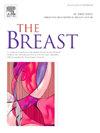Survival of patients with squamous cell carcinoma of the breast compared with invasive ductal carcinoma by biological subtype: A matched analysis of the Japanese national clinical database-breast cancer registry
IF 7.9
2区 医学
Q1 OBSTETRICS & GYNECOLOGY
引用次数: 0
Abstract
Purpose
Owing to the rarity of primary squamous cell carcinoma (SCC) of the breast, the prognosis of SCC remains uncertain. We aimed to investigate the clinical features and prognosis of breast SCC by subtype.
Methods
A total of 350,977 patients with breast SCC or invasive ductal carcinoma (IDC) were identified from the National Clinical Database-Breast Cancer Registry from 2004 to 2014. SCC and IDC patients with triple-negative and luminal subtypes were matched 1:1 via exact matching. Overall survival (OS), breast cancer-specific survival (BCSS), and recurrence-free survival (RFS) were compared between patients with SCC and those with IDC. In-field area recurrence was analyzed among patients who received adjuvant radiotherapy.
Results
The study included 452 SCC patients and 182,707 IDC patients. SCC patients were more likely than IDC patients to have advanced-stage disease. The crude 10-year OS, BCSS, and RFS were 70 %, 80 %, and 66 % for patients with SCC, and 88 %, 93 %, and 81 % for patients with IDC, respectively. After 204 patients with the triple-negative subtype and 68 patients with the luminal subtype in each group were matched, the 10-year BCSS was significantly worse for SCC (76.7 %) than for IDC (85.5 %) within the triple-negative subtype. There were no differences in OS, BCSS, or RFS for the luminal subtype. The rates of in-field area recurrence were similar between patients with SCC and those with IDC with either the triple-negative subtype or the luminal subtype.
Conclusions
Within the triple-negative subtype, SCC histology was associated with a significantly worse prognosis than IDC.
乳腺癌鳞状细胞癌患者与浸润性导管癌患者生物学亚型的生存率比较:日本国家临床数据库-乳腺癌登记处的匹配分析
目的由于乳腺原发性鳞状细胞癌(SCC)的罕见性,其预后仍不确定。我们的目的是探讨乳腺鳞状细胞癌亚型的临床特征和预后。方法从2004年至2014年国家临床数据库-乳腺癌登记处共发现350,977例乳腺鳞状细胞癌或浸润性导管癌(IDC)患者。三阴性和腔型SCC和IDC患者通过精确匹配1:1匹配。比较SCC和IDC患者的总生存期(OS)、乳腺癌特异性生存期(BCSS)和无复发生存期(RFS)。分析辅助放疗患者野区复发情况。结果纳入SCC患者452例,IDC患者182707例。SCC患者比IDC患者更有可能出现晚期疾病。SCC患者粗10年OS、BCSS和RFS分别为70%、80%和66%,IDC患者粗10年OS、BCSS和RFS分别为88%、93%和81%。每组匹配204例三阴性亚型患者和68例腔内亚型患者后,三阴性亚型中SCC的10年BCSS(76.7%)明显低于IDC(85.5%)。luminal亚型的OS、BCSS或RFS无差异。无论是三阴性亚型还是腔内亚型,SCC患者与IDC患者的场内复发率相似。结论在三阴性亚型中,SCC组织学与IDC的预后明显差。
本文章由计算机程序翻译,如有差异,请以英文原文为准。
求助全文
约1分钟内获得全文
求助全文
来源期刊

Breast
医学-妇产科学
CiteScore
8.70
自引率
2.60%
发文量
165
审稿时长
59 days
期刊介绍:
The Breast is an international, multidisciplinary journal for researchers and clinicians, which focuses on translational and clinical research for the advancement of breast cancer prevention, diagnosis and treatment of all stages.
 求助内容:
求助内容: 应助结果提醒方式:
应助结果提醒方式:


